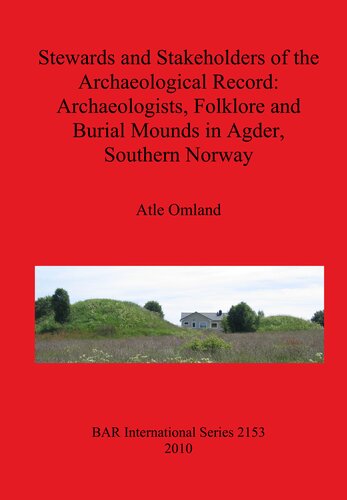

Most ebook files are in PDF format, so you can easily read them using various software such as Foxit Reader or directly on the Google Chrome browser.
Some ebook files are released by publishers in other formats such as .awz, .mobi, .epub, .fb2, etc. You may need to install specific software to read these formats on mobile/PC, such as Calibre.
Please read the tutorial at this link: https://ebookbell.com/faq
We offer FREE conversion to the popular formats you request; however, this may take some time. Therefore, right after payment, please email us, and we will try to provide the service as quickly as possible.
For some exceptional file formats or broken links (if any), please refrain from opening any disputes. Instead, email us first, and we will try to assist within a maximum of 6 hours.
EbookBell Team

4.7
16 reviewsThe main objective of this book is to discuss parts of the later life histories of burial mounds by studying local interests in them through folklore, but also disturbances and reuses of them. To this end, this study discusses folklore about burial mounds in the two Norwegian southern counties of Agder. These mounds were constructed as the burial places for the dead, in Norway built with a changing frequency during the Bronze Age and the Iron Age (c.1800 BC–AD 1050). These narratives, told by those people who have lived in their vicinity, document a local interest in the monuments, but also question who are the stakeholders and who should be the stewards of the archaeological record. These issues are discussed by scrutinizing the following three main topics: 1. Discussion: of selected parts of the later life histories of burial mounds, mainly during the nineteenth and twentieth centuries, confined to oral narratives and folkbeliefs about them, but also their disturbance. 2. Reflexivity: attaining knowledge on how archaeologists – but also other scholars – have viewed and responded to the discussion of life histories of archaeological monuments, mainly from the establishment of archaeology as an academic discipline around 1840 and until around the year 2000. 3. Indigenization: considering to what extent the interests of non-archaeologists should be included by archaeologists and in heritage management, which has also been termed ethnocritical archaeology.